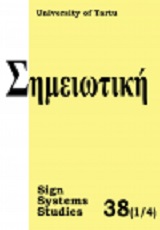
From mimicry to mime by way of mimesis: Reflections on a general theory of iconicity
Practically all theories of iconicity are denunciations of its subject matter (for example, those of Goodman, Bierman and the early Eco). My own theory of iconicity was developed in order to save a particular kind of iconicity, pictoriality, from such criticism. In this interest, I distinguished pure iconicity, iconic ground, and iconic sign, on one hand, and primary and secondary iconic signs, on the other hand. Since then, however, several things have happened. The conceptual tools that I created to explain pictoriality have been shown by others to be relevant to linguistic iconicity. On the other hand, semioticians with points of departure different from mine have identified mimicry as it is commonly found in the animal world as a species of iconicity. In the evolutionary semiotics of Deacon, iconicity is referred to in such a general way that it seems to be emptied of all content, while in the variety invented by Donald the term mimesis is used for a particular phase in the evolution of iconic meaning. The aim of this article is to consider to what extent the extension of iconicity theory to new domains will necessitate the development of new models.
More...

